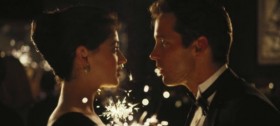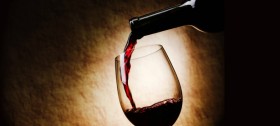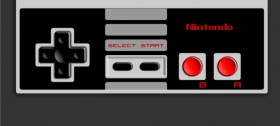Posts tagged Stark Raving

Wine 101 for Dudes
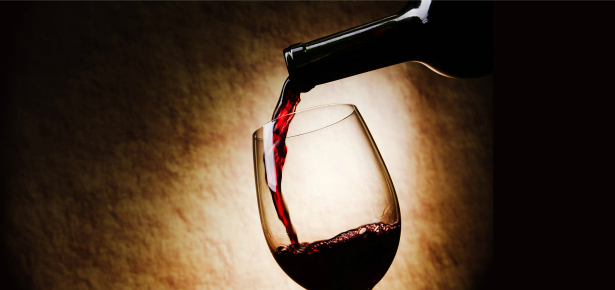
If you’re a whiskey and beer drinking kinda guy, you probably don’t have a great relationship with wine. And that’s okay. Wine isn’t for everyone. But it isn’t just a chick beverage, either. If you’re like me, wine is just something that’s never been a viable option. Sure, you may have gotten tipsy during a wine tasting or two, but what if you don’t know the basics? How are you supposed to dive in and enjoy the delicious chemical balance of fermented grapes without any real frame of reference?
Well fear not, fellow wine noobs. We got the basics covered for you right here. To prep this Wine 101 for Dudes guide, we spoke with Lauren Waters, the Senior Wine Education Manager at Diageo Chateau & Estate Wines. Lauren gave us the lowdown on everything from introductory wine selections to ordering tips to tannins and Grenache and so much more. Keep reading and get yourself up to speed, bucko!
Know What Noobs Like: Fruit Forward
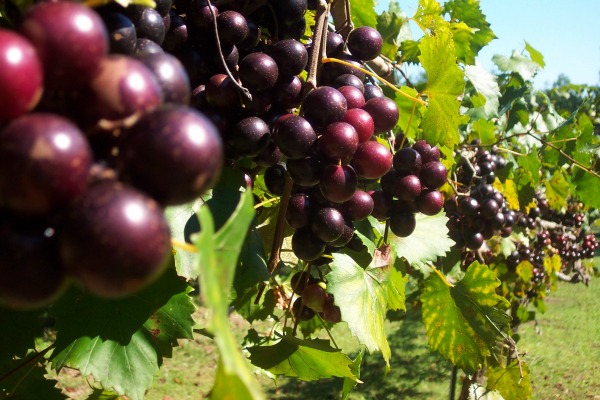
“People who are new to the wine category or haven’t been dabbling in wine for that long, what they really love are wines that are really fruit-forward, and by that I mean that they’ve got tons of intensity and tons of fruit flavors and all types of fruit character in them and that they’re pretty easy to drink.”
Remember fellas, when it comes to wine, fruity is good.
Safe Bet: Red Blends
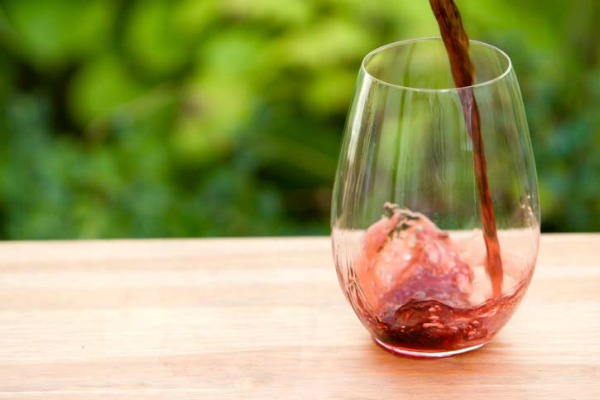
“Consider wines that aren’t really heavy, either in tannin or acidity or all these other things that you might hear about; wines that are just basically easy to drink, easy to appreciate and easy to enjoy. To that end, we typically find ourselves looking towards California wines because they’re more of a riper, more approachable style over all, so red blend.”
Basically, if you’re looking at a wine list and you’re lost, reach for a California red blend. It’s a nice, friendly, fruit forward introductory selection.
Put It in Neutral: White Wines
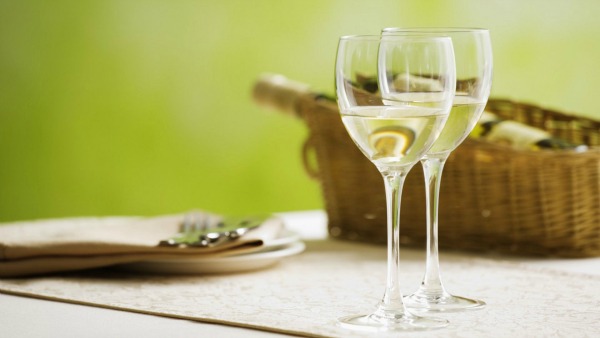
“In terms of white wine, I find that a lot of people like, especially when they’re starting out, things that are more neutral. So they don’t tend to like the really oaky chardonnays or things like that. They tend to like wines that have less oak character and less pungent flavors. Unoaked chardonnays are always a hit. Pinot Grigio is always kind of a neutral variety. Riesling is something that a lot of consumers that are new to the category tend to like because they tend to have a little bit of sweetness to the wine that makes them really easy to like.”
So if you’re not feeling fruit forward, you can always play it safe and go for a nice white. But how are you supposed to know which wine to reach for?
Know the Situation: Red vs. White
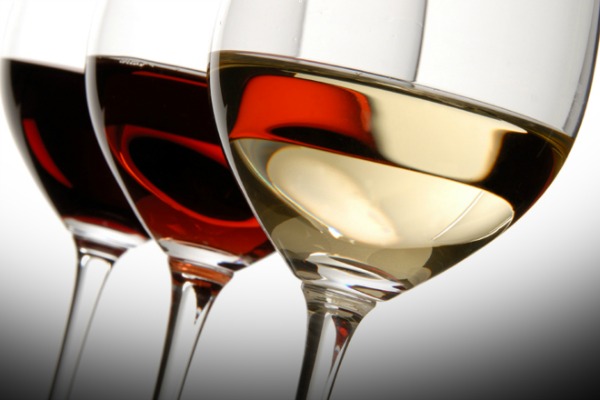
“The difference between red and white wine is really when and how you want to enjoy it. So really it’s about the occasion. So if it’s a really hot summer day or you’re sitting by the pool or it’s a beach day or something like that, you want something that’s light and fresh and cool and can also quench your thirst. So that’s a great time for a white wine. Also if you’re out to dinner and you’re having like a lighter food option, say you’re having like fish tacos or something like that, white wine is really the perfect selection to go along with that. Speaking to red wine, red wines are typically served right around room temperature so it’s not like that cool, thirst-quenching kind of feeling that you would get from a white wine which would be served cooler. So for red wines, I tend to think of them as more evening wines. You would pair them with bigger food items. So if you’re out for dinner and you’re going to have steak or if you’re grilling BBQ or having stuff like that, your bigger profiles will go best with red wine.”
So there you go. Look at you, big guy. You’re ready to order the appropriate wine for the right occasion. But does this mean you gotta get all crazy about food and wine pairings? Nah, bro. Just do want you want!
There Are No Rules: Wine Pairing

“I think the most important thing to remember about pairing is there are no rules. You don’t have to follow any specific strategy like you can only drink white wine with fish or you can only drink cabernet with steak. All those rules are, in my opinion, silly. People need to find what they like. It’s all about experimentation, it’s all about discovery and it’s all about how they meet social experiences with wine. What works for one person does not necessarily work for another person because everybody is different and wine overall is just such a subjective type of a topic so keep in mind, there are no rules. It’s all about experimentation, discovery and finding what works for you.”
So if you wanna pair your Sloppy Joe with a Sauvignon Blanc, just do your thing! Don’t let some punk wine snob tell you what’s what.
Facing Your Fears: Navigating a Wine Shop
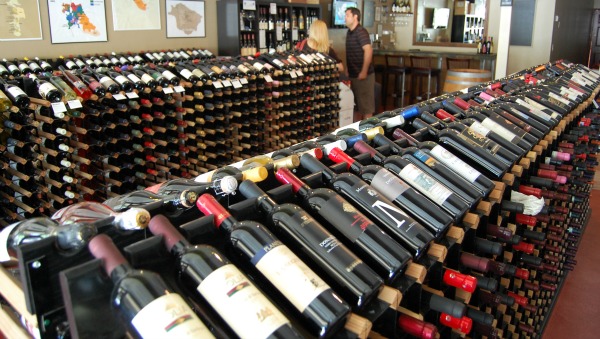
“First of all, it’s totally overwhelming. You walk into BevMo and you’re thinking, ‘OK, where do I even start? There’s like 15 aisles here. There’s wines that range in price from $2.99 to $2,000, where do I even start?’ It’s good to have your price point in mind. Are you looking for a bottle that’s $15 to $20? Are you looking to splurge and spend a lot or are you looking for a Wednesday night $10 bottle. Having a good kind of price point in mind is always a good way to start because that cuts the store probably into a fifth and you can really pinpoint the section that you’re looking for.”
Think about the occasion and don’t be afraid to ask for help. It’s still manly to ask for help in a wine shop. It’s not like you’re asking for map directions or anything.
“The guys that are walking in those aisles are paid to be there and help you. So if you can tell them ‘Hey, I’m looking to spend $20. I’m having a bunch of friends over on Friday and we’re going to do burgers after work on the grill. What do you recommend? Point me in the right direction. Give me three options.’ It’s always a good thing to use your resources.
Intimidation Be Damned: How to Dominate a Wine List

“Opening a wine list in a restaurant, especially if you’re out on a date or you’re with people that you work with or whatever, it can be a really scary experience. You’re handed the list and all of a sudden you have this giant list of things that are probably written in multiple languages sitting in front of you and the only thing you can probably relate to is the dollar amount.”
So what’s a guy supposed to do?
“My recommendation when you’re in a situation like that is to figure out how the wine list is set. Is it set by country or by label? Once you know how this particular wine list works, try to find some options in there that might fit what the group is looking for.”
Think safe red blends. Chill whites. You know the drill. But what if you can’t even say the name of the wine you want to order?
“Half the time, I feel like people pick the wine because they can say it. I mean I’ve done this. When I first started out with wine I was like, ‘There’s no way I’m ordering this wine because I can’t say it and I don’t want to sound like an idiot, so I’ll take this wine even though I have no idea what it is but I can say it and at least I’ll feel like I’m halfway intelligent.’ So this is just a little trick – there’s usually a number, or a bin number is what it’s called, written next to the wine and the reason why the bin number is there is because it tells the server or the wait staff person where to find that precise wine. So when they go into the wine area, the wine cellar, whatever they have in that restaurant, each wine has a slot. So rather than saying ‘I’ll take the 2002 Châteauneuf-du-Pape from Chateau le Nerf’ or some tough-twister name, you can just look for the number and say ‘Bin 312’ and they’ll know exactly what you mean and you don’t have to say it. If there’s not a bin number listed, you can also just look for one word that you know how to say. So maybe you don’t know any of those words but you know the vintage so you kind of point to it and say, ‘We’ll try this 2002, it should be pretty good.’ Just try to find any kind of common ground.”
Bam, there you have it gents. Act like you been there before with bin numbers, pointing gestures and vintage/year dropping.
Getting Started: The Stark Raving Collection and Sterling Vineyards

Lauren represents Diageo, and they have quite a few wine selections under their belt. The Stark Collection is a good place to start.
“In terms of recommendations from the Diageo portfolio, the Stark Raving lineup, to me is such an amazing lineup of wines because the wines are, first of all they’re just freakin’ delicious. The quality is really high, the packaging looks beautiful, so it’s definitely a wine that you could bring to a party or rollup to a BBQ with and not have any qualms about how the wine looks. The red blend from Stark Raving is a killer wine, as well as the Malbec. The Malbec is from Argentina, from the Malbec region. That’s also a really fantastic wine. In terms of white, the Sterling Vineyards Collection which is part of the Sterling Vineyards portfolio, has a wine called the Aromatic White which is fairly new out there and it’s a blend. It’s a white blend and as the name suggests. It’s got really strong aromas and it’s really a lovely kind of sipping wine on the palate that a lot of people tend to love so that’s a really great wine. Also from that portfolio, the Sauvignon Blanc is a really nice wine too. It’s light and clean and fresh and completely inoffensive in every single way but just really delicious.
So look at you, newly minted wine expert. You even have some specific selections to fall back on.
What’s in an Age: Understanding Vintages
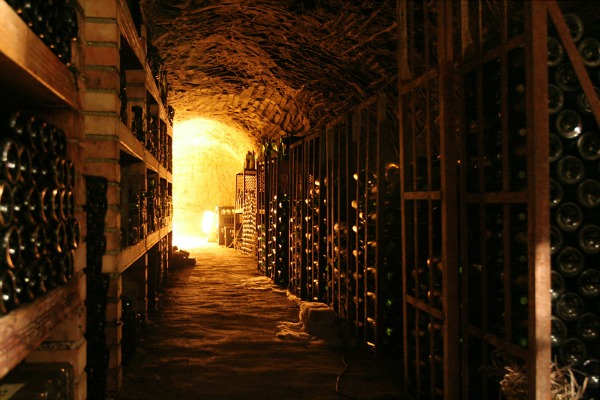
Have you ever wondered if there’s a good rule of thumb about wine age?
“So here’s the good news on that question. Over 90% of all wines produced are not meant to be aged. It’s only the top tier of wine that we encounter that are either meant to be aged or can withstand aging, because there’s a couple of components when you look at aging a wine. Does it have the necessary structural elements to age? So then you get into all those geeky things like does it have enough tannin? Does it have enough acid? Is the concentration there? Does it have enough stuffing to be able to age? But then the other question is, is it worth aging? If I put this wine in my cellar or in my coat closet in a dark corner (which is a really great place to keep wine if you don’t have a cellar), if I keep this wine for five years and I open it five years later, is it going to be better? Is it actually worth aging it? So that’s the question, but like I said, the good news is that most wines are meant to be drunk upon release.”
So you’re new to this wine thing, man. Don’t worry too much about buying something that’s old enough or aging something to make it better. Just pick a wine that you like and enjoy it.
Open This Baby Up: Understanding Decanting
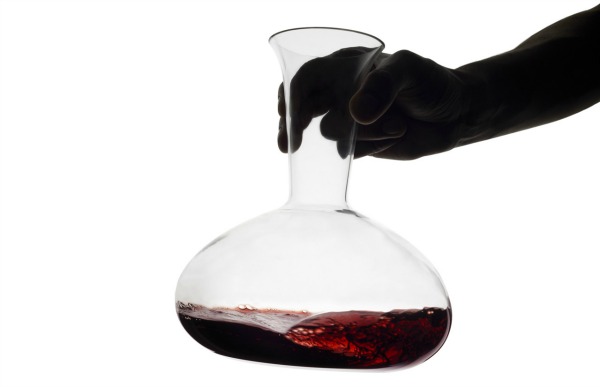
If you know wine connoisseurs, you’ve probably seen them decant wine before. Do all wines need to be decanted before being consumed?
“White wine, no. Sparkling wines, no. Red wines, sure. It’s not really necessary by any stretch again for the great majority of wine. The reason why you would want to decant a wine is that it’s super, super young. This could mean that the wine was just released, so it’s got like really high tannin, it’s really concentrated and you kind of want to open it up, so that’s why you would decant. The other reason why you would decant is if a wine is really old and it’s got lots of sediment and all kinds of things floating around in it. You’d want to decant to separate the particles from your glass because obviously nobody wants to drink a glass of wine that’s got tons of things floating around. Those are the two reasons but sometimes it’s fun, sometimes it’s about the show. It doesn’t really have to be just for quality. It can be just for the fun of it and just for the look of it. There’s no doubt that when you do extra things like this, it starts to make it feel more special.”
So if you want to show off and make it an experience, break out the decanter. Otherwise, just grab some glasses and get right to it.
Know Your Ingredients: What the Hell Is Tannin?

“Tannin is not just present in wine. It’s present in a lot of different foods. Basically tannin is responsible for a dry sensation on the gums and the mouth. The best way to encounter tannin, if you’re not sure exactly what it is, is to eat an unripe banana and you will get a full dose of tannin. You will never, ever, ever have to ask again what tannin means. And you’ll probably never, ever want to try that experiment again.”
In other words, it’s “an astringent, bitter plant polyphenolic compound that binds to and precipitates proteins and various other organic compounds including amino acids and alkaloids.” So there you go.
Know Your Ingredients: What the Hell Is Grenache?
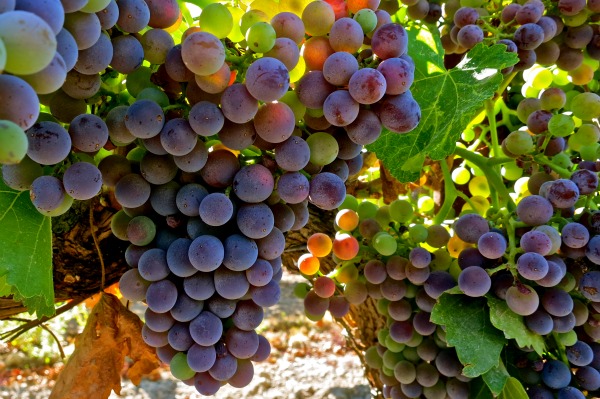
When I went wine tasting, the only thing I took away from it (other than mo wine, mo cheese, please) is that I really liked Grenache. I wonder why that is?
“Grenache is a low tannin varietal that’s very intense and really fruity so we’re back to one of my very first comments which is people love wines that are soft, intense and fruity, that is Grenache to a tee, so that’s the reason why you like that wine and that’s the reason why Grenache is typically found in most Californian red blends because it adds that element of fruitiness and it’s just a really loveable, easy to appreciate grape and it translates in the wine. It’s just plain delicious!”
We talked about the friendly approachability of the red blends. Based on my extra-limited wine tasting experience, you can’t go wrong with a Grenache blend. Do it.
Going Green: The Fuss About Organic Wines
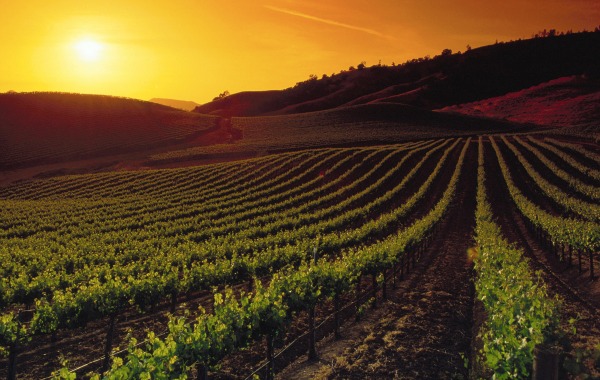
Wait, isn’t all wine organic? What’s all the fuss about?
“Well, that’s a really interesting question. It’s very similar to other food products in the way that the vineyards are farmed. So just like you could have organic strawberries that were grown without chemicals or pesticides or anything like that, the same thing can happen with vineyards which are basically grapevines. So they can be farmed conventionally, which is when the farmer has the ability to use any kind of fertilizer or chemical compound that’s allowed by law. When you talk about organic, again it’s very similar to other foods and other farming techniques. Organic would be minimal use of sulfur and all of the fertilizers and all of the protectants would be of an organic natural. So they wouldn’t be using pesticides, they’d be using things that are natural.”
Why So Serious: Just Have Fun

“Don’t get bogged down on the details. Wine is, at its core, it’s a social beverage. It’s meant to be enjoyed. It’s meant to be fun. So don’t think you have to know everything about it. The most important thing is just ask questions. Ask questions to the waiter who brought you the wine list, to the salesman who’s walking around in BevMo, just ask questions. There’s absolutely nothing wrong with that.”
Educating yourself is one thing, but you don’t have to trip if you’re not a wine snob. Stick to being snobby and dickish about single malt Scotch. That shit matters. Wine is a playful beverage. Just have a good time, dude!
Jun 4th

